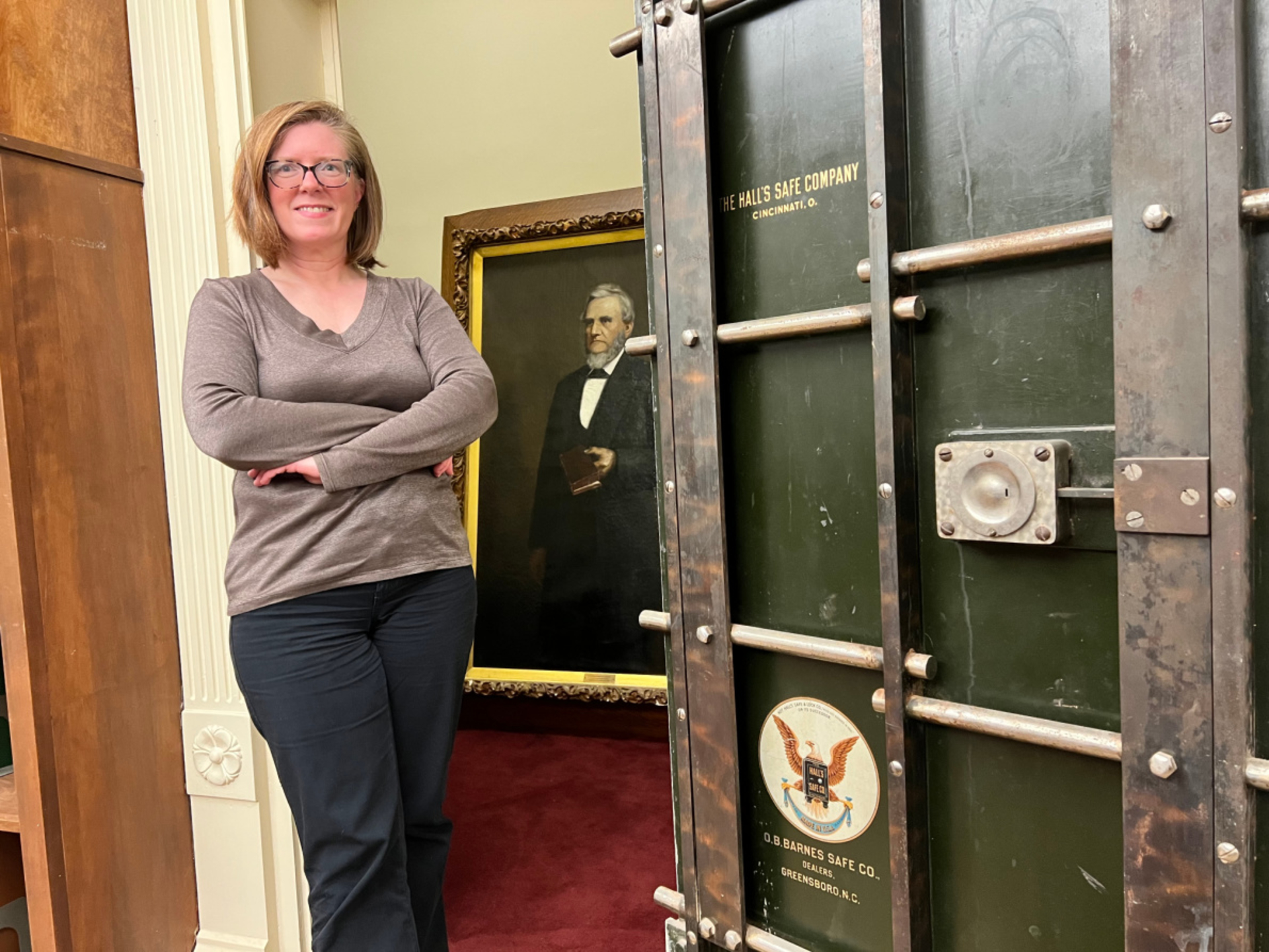
A 114-year-old vault in Hege Commons Library used to house some of the College's rarest Quaker manuscripts and documents. Not anymore.
Behind an unassuming door in the Quaker Archives Research Room in the Hege Academic Commons, lies a vault. Its eight-inch thick steel door leads to a smaller room whose concrete and brick fireproof walls are twice as thick as those for the rest of the building.
If all this is starting to read like an Ocean’s Eleven-like tale of fabulous riches within, relax. You’re about 33 years late. What is known is that these days the door to the vault is permanently open. The steel bolts that once locked the door were soldered so that the door can never be closed. And the only “treasures” inside are the microform collection and a microfilm reader current students might recognize as a bit of history from the streaming series, “Stranger Things.”
But the story behind the vault is priceless – at least to Gwen Erickson (above), Quaker Archivist and Special Collections Librarian. The vault was part of the library when it was built in 1909. It was used to house rare Quaker publications, photos, legal documents and manuscripts from around the South.
There’s a poem written in 1698 by Henry White, believed to be one of the first poems written in North Carolina. There’s also a small but revealing collection of letters from Harriett Peck, a school teacher who, in 1837, wrote to her family back home in Rhode Island about her job at a new boarding school in New Garden, North Carolina. That school would later become Guilford College.
As the College grew and the Quaker Archive collection grew with it, the vault became increasingly obsolete. In 1989, when the library underwent a major expansion and renovations, the Quaker Archives was permanently moved to a full size room with double steel doors and today has expanded further to the library’s sub-basement.
“It's a newer construction, below ground, watertight and has more consistent air quality in terms of temperature and humidity than the vaults of the past would have had,” says Gwen.
Documents are kept on metal compact shelves that are archival professional grade. With more space to work with, Gwen says the documents do not need to be handled as much, which adds to their, well, shelf life.
As for the vault upstairs, the College decided it would be too much trouble breaking it down so it stands as something of an artifact itself from another time.
These days Gwen calls the vault “a fun conversation piece” but it still serves a purpose. Library staff use it for sound recordings when the Research Room is too busy for quality audio – or if something in the library needs a temporary home before being relocated.
For the most part, Gwen says, the vault likes a life of anonymity. “Once in a while a student is back here for the first time and says, ‘Whoa! Is that a real vault?”

